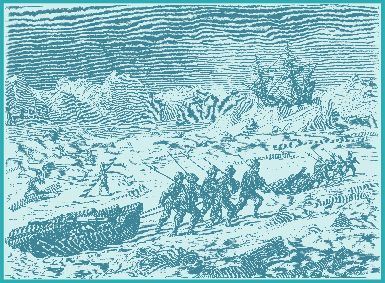The Explorer
WILLEM BARENTSZ – THE EXPLORER
Named after the iconic Dutch explorer, Barentsz Gin delivers a Pioneering Spirit in honour of Willem Barentsz.
An intrepid arctic explorer, history remembers Captain Willem Barentsz for challenging the unknown in seeking a passage through the Arctic during the Dutch Golden Age. He had character and tenacity, always in search of the new age.
THE NORTH EAST PASSAGE
During the second-half of the 16th-century, both Englishmen and the Dutch attempted to find a Northeastern trading route to China by way of the sea.
Willem Barentsz captained three Dutch expeditions to the far North in search of a Northeast passage.

JUNE, 1594 – FIRST EXPEDITION;
While exploring waters north of the Norwegian Sea, a bold polar bear attempted to board one of the crew’s boats. The seamen decided to capture it to bring it back to Holland, but once leashed and brought aboard the ship the bear rampaged.
Barentsz reached the West coast of Novaya Zemlya, and followed it Northward before being forced back in the face of large icebergs.
JUNE, 1595 – SECOND EXPEDITION;
The following year, Prince Maurice of Orange, named Barentsz chief pilot and conductor of a new expedition, accompanied by six ships heavily loaded with goods to trade with China.
The voyage went between the Siberian Coast and Vaygach Island – where the crew came across 20 Samoyed “wild men” with whom they were able to speak, as a crewmember spoke their language. Due to unexpected weather which had left the Kara Sea frozen, they again were forced to turn back.

MAY, 1596 – THIRD EXPEDITION;
On their third expedition, the crew braved Polar bear infested waters to discover an island that they aptly named Bear Island. To avoid becoming entrapped in the surrounding ice, Barentsz intended to head for the Vaigatch Strait, but became stuck within the many icebergs and sheets of floating ice.
Stranded, the 16-man crew was forced to spend the winter on the ice. After a failed attempt to melt the permafrost, the crew used lumber from their ship to build a lodge they called ‘The Saved House’. Dealing with extreme cold, the crew realised that their socks would burn before their feet could even feel the warmth of a fire – and took to sleeping with warmed stones and cannonballs. The ship was stocked with plentiful food, however, much of the beer froze, thus bursting the casks.
When June arrived, the ice had still not loosened its grip on the ship and the survivors took two small boats out into the sea.
It took seven more weeks for the boats to reach the Kola Peninsula, where they were rescued by a Dutch merchant vessel commanded by former fellow explorer Jan Rijp. By that time, only 12 crewmen remained.
The honour having ‘officially’ discovered SVALBARD goes without contradiction to the Dutchman – Willem Barentsz.
In 1853, the former Murmean Sea was renamed the BARENTS SEA in his honour. BARENTSBURG, the second largest settlement on Svalbard, BARENTS ISLAND and THE BARENTS REGION were also named after Barentsz.
History remembers Captain Willem Barentsz for challenging the unknown and being an intrepid explorer in seeking a passage through the Arctic during the Dutch Golden Age and being the man who put his name to the Barents Sea.




